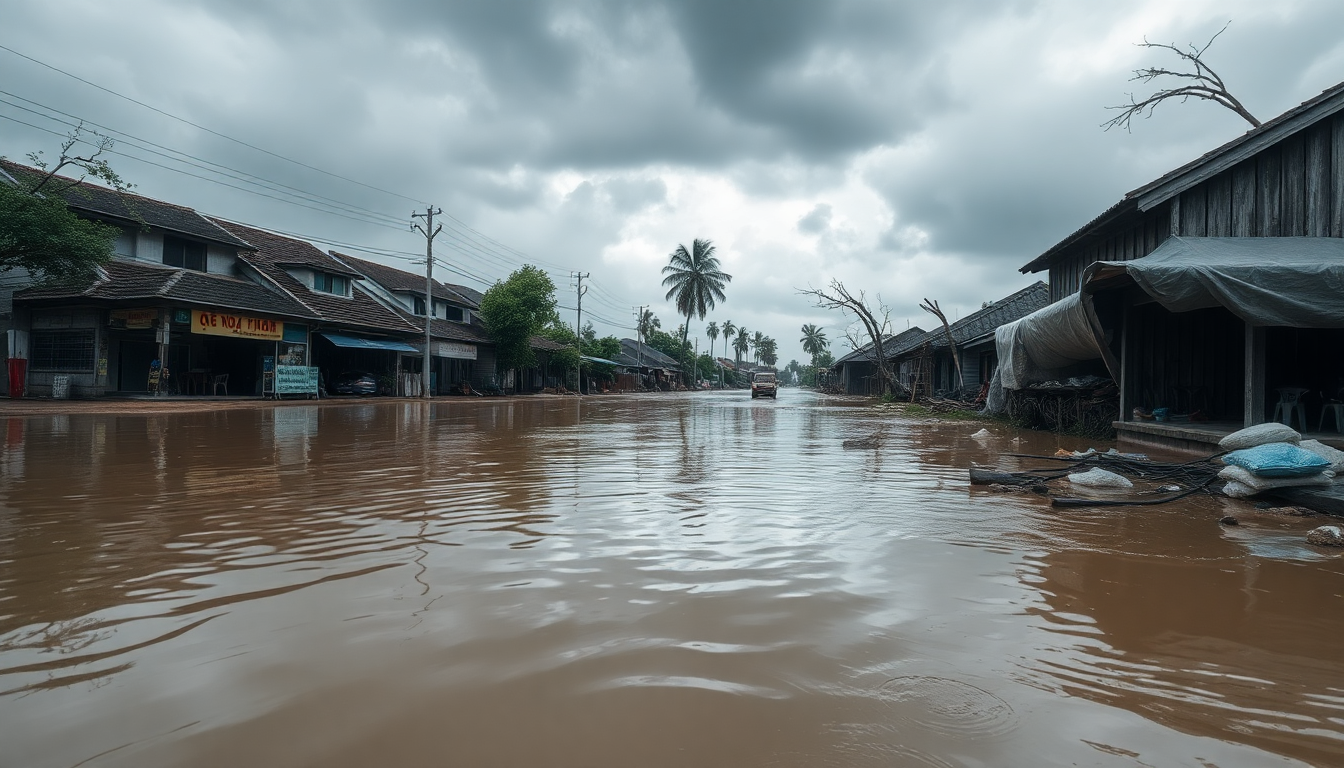Table of Contents
Typhoon Kajiki has recently swept through northern Vietnam, unleashing a torrent of destruction and raising serious concerns about safety and infrastructure. With the country’s weather agency warning that rainfall could reach a staggering 500 millimeters by the end of Tuesday, particularly along the north central coast, residents are facing the harsh reality of flooding and power outages. How are they coping in the aftermath of this devastating storm?
Severe Weather Conditions and Community Responses
On Monday, Typhoon Kajiki made landfall, bringing with it torrential rains and fierce winds that wreaked havoc in provinces like Nghe An and Ha Tinh. Although wind speeds have dropped from a peak of 166 km/h (103 mph) to between 118-133 km/h (73-83 mph), the damage has been nothing short of catastrophic. Local residents have shared alarming accounts, with one person describing waves reaching heights of up to 2 meters (6.5 feet), causing floodwaters to encroach dangerously close to their homes and businesses. Can you imagine witnessing such a powerful force of nature?
State media outlets have been quick to provide updates, revealing that power outages are widespread in Ha Tinh province. Reports of roofs being blown off and floating fishing farms being swept away paint a vivid picture of the storm’s impact. In response, local authorities have taken decisive action, shutting down airports, closing schools, and initiating mass evacuations to protect residents from the storm’s fury.
Preparation and Evacuation Efforts
In preparation for Typhoon Kajiki, Vietnamese authorities didn’t wait until the last minute. They took proactive measures, from closing airports and schools to implementing evacuation procedures. This serious approach underscores the government’s commitment to safeguarding its citizens from the potential dangers posed by the storm. It’s a reminder that being prepared can save lives.
The community’s response has been just as inspiring. Local volunteers have stepped up to lend a helping hand, establishing shelters for those displaced by the storm and providing refuge amid the chaos. This solidarity among residents highlights their resilience, as they band together to support each other during such trying times. Isn’t it incredible to see communities come together like this?
Long-term Implications and Recovery Prospects
As Vietnam begins to assess the damage from Typhoon Kajiki, the focus will naturally shift toward recovery and rebuilding efforts. The immediate destruction is just the beginning; there are also long-term concerns about infrastructure and local economies. The road to recovery is likely to require significant investment, as repairing damaged properties and restoring disrupted services will demand considerable resources. Are we ready to face the challenges ahead?
In the weeks to come, it will be crucial to watch how local authorities navigate the recovery process. The effectiveness of their response will play a key role in how quickly communities can return to normal life. Moreover, the lessons learned from Typhoon Kajiki could inform future preparedness strategies, ultimately strengthening the region’s resilience against similar natural disasters. Will we learn from this experience to better handle the storms of tomorrow?


